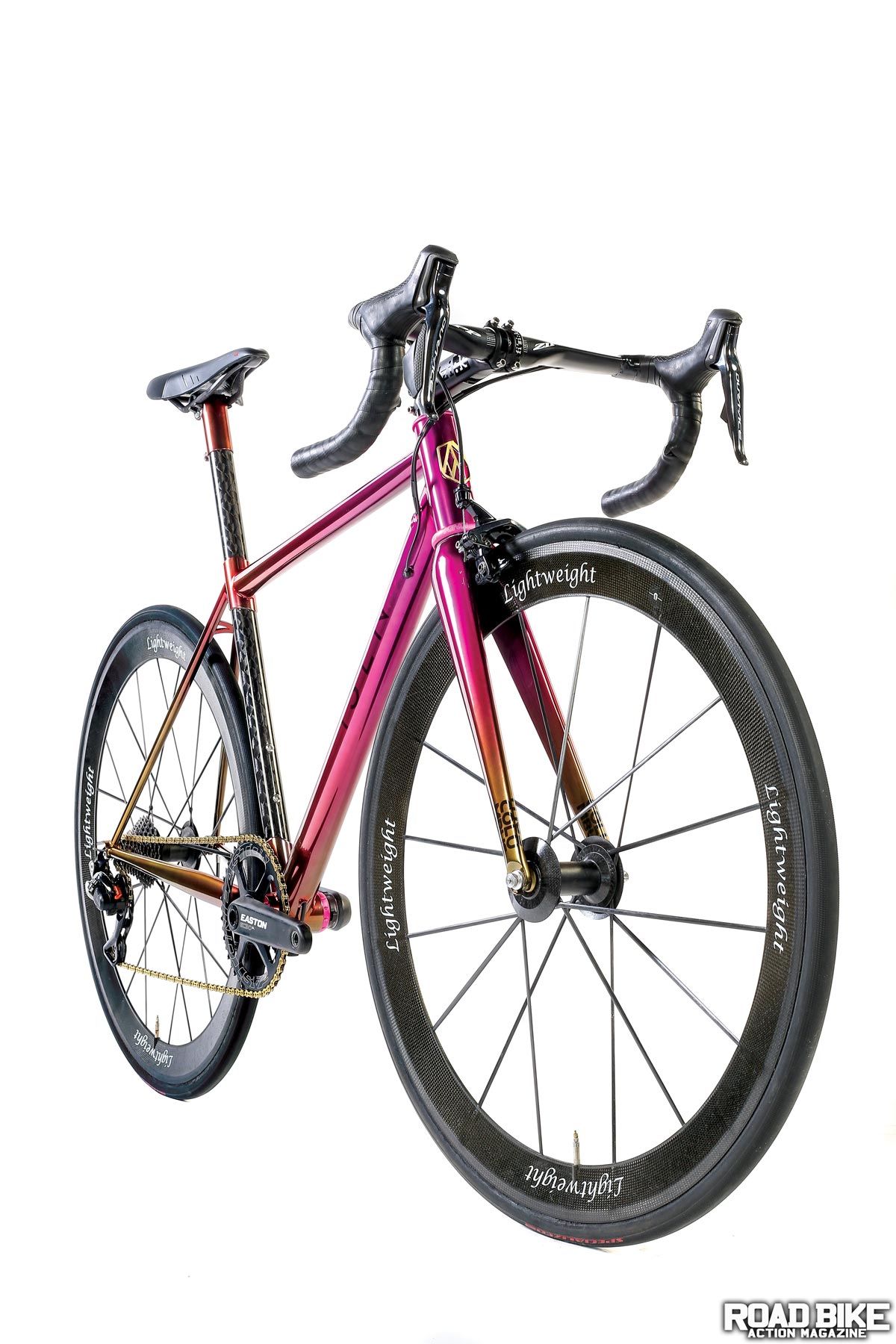By Zap
It had been a while since we last hooked up with the folks at Lightweight, and since we were testing their new Obermayer Evo wheel this month, we figured it would be the perfect opportunity to reach out for a Q&A, as well as take a look back at some of the bikes that have rolled past our lenses with the vaunted carbon hoops.
Lightweight sales manager Matthias Wissler was kind enough to shed some light on the latest goings-on with the famous German wheel maker.
THANKS TO HEINZ
When was Lightweight started? Didn’t the bike wheels follow other carbon products?
Lightweight was taken over from Heinz Obermayer in 2003. At that time, we mainly manufactured parts for the aviation and aerospace industries. The production precision and quantity of the wheels would be increased significantly afterwards, and Heinz remains a very important partner for the company.
The Lightweight fable has it that Jan Ullrich was the first rider to “break” the brand in the WorldTour, and that everyone who was using them was buying them.
Yes, especially Ullrich and Lance Armstrong who played a big role in breaking the brand to the wider public, but there were also other famous riders, such as Johan Museeuw and Bjarne Riis. And yes, to this day the riders and teams using our equipment in the ProTour do pay for it.
“Jan Ullrich and Lance Armstrong played a big role in breaking the brand to the wider public. And yes, to this day the riders and teams using our equipment in the ProTour do pay for it.”
What is the current state of production? Are the wheels still made at the factory in Friedrichshafen?
The factory is still in Friedrichshafen near Lake Constance, and we have about 100 employees at the moment for both the bicycle and the industrial (medical devices, aerospace, robotics and automotive) segment. All our wheels are still handcrafted in Germany. It takes around 20–26 hours per wheelset with around 150 work steps and 12 specialists involved for the completion of one set.
What was the one wheel that made Lightweight’s legacy, and what key
piece of carbon manufacturing did Lightweight pioneer?
The keystone wheel or product is the Lightweight “standard” wheel, which evolved over three generations to the next big technical milestone, the Meilenstein wheelset. In terms of manufacturing, there are some very important points: Our wheels are manufactured with a special layup and a high-performance inner foam core. Also, the carbon we do use is very advanced. We use around 50 different types of fibers within our company, and many of them have been sourced due to our experience in other fields, such as aerospace and medical devices.
The main benefits of the wheels and what really set them apart are acceleration, reliability and overall ride feeling. The monocoque structure we use for building our wheels has been leading in stiffness-to-weight ratio for the past 20 years. The light weight in combination with the high stiffness leads to an unparalleled acceleration that can be felt immediately. The reliability is another important point. In a previous disc brake wheel test here in Germany, our wheelset was the only one that did not show any sign of deformation or deviation in any technical figure after 15,000 emergency brake stops under full load. All the other wheels did break long before the 15,000 emergency brakings.
Was there a reluctance to embrace wide internal widths and disc brakes with your gravel wheels?
Not necessarily reluctant. The way we are developing and manufacturing our wheels is very specific, though. Due to the all-carbon monocoque construction, every wheel that is developed requires a completely new development because of the technical forces on the wheels and the changing requirements. This requires new material and a new layup for every new wheelset, which takes more time than adapting an existing wheelset. However, we have also learned a lot from this time and have increased our focus significantly on new wheel developments and the speed of it.
Unlike the wheels, both the frame and Lightweight components are made in Asia. A few years ago, I recall gasping at the $100 price for your 18-gram bottle cage, but was told that it was a top seller; is that still true?
The current lineup of components—handlebar, stem, seatpost and bottle cage—are made off-shore. All wheel models are 100 percent manufactured in Germany at our facility near Lake Constance. About the bottle cages, that’s true, they still remain one of our strongest-selling items.
It looks like the frame production has been discontinued.
Yes, that’s correct. The frame was discontinued last year because we are focusing all of our energy on the development of new wheel models at the moment, where we see big growth potential in various areas. Also, we are working on one new project, which is exciting, but it would be a bit too soon to talk about now.
And last, what are the more popular wheels, and which are more popular between rim and disc brake models?
For our top sellers in the wheel segment, this would be around 90 percent disc at the moment. The best-selling model is our Meilenstein EVO, followed by the newly launched Obermayer EVO and the Pfadfinder EVO. We definitely do see a stronger growth in our Fernweg EVO models as well, though.









Comments are closed.